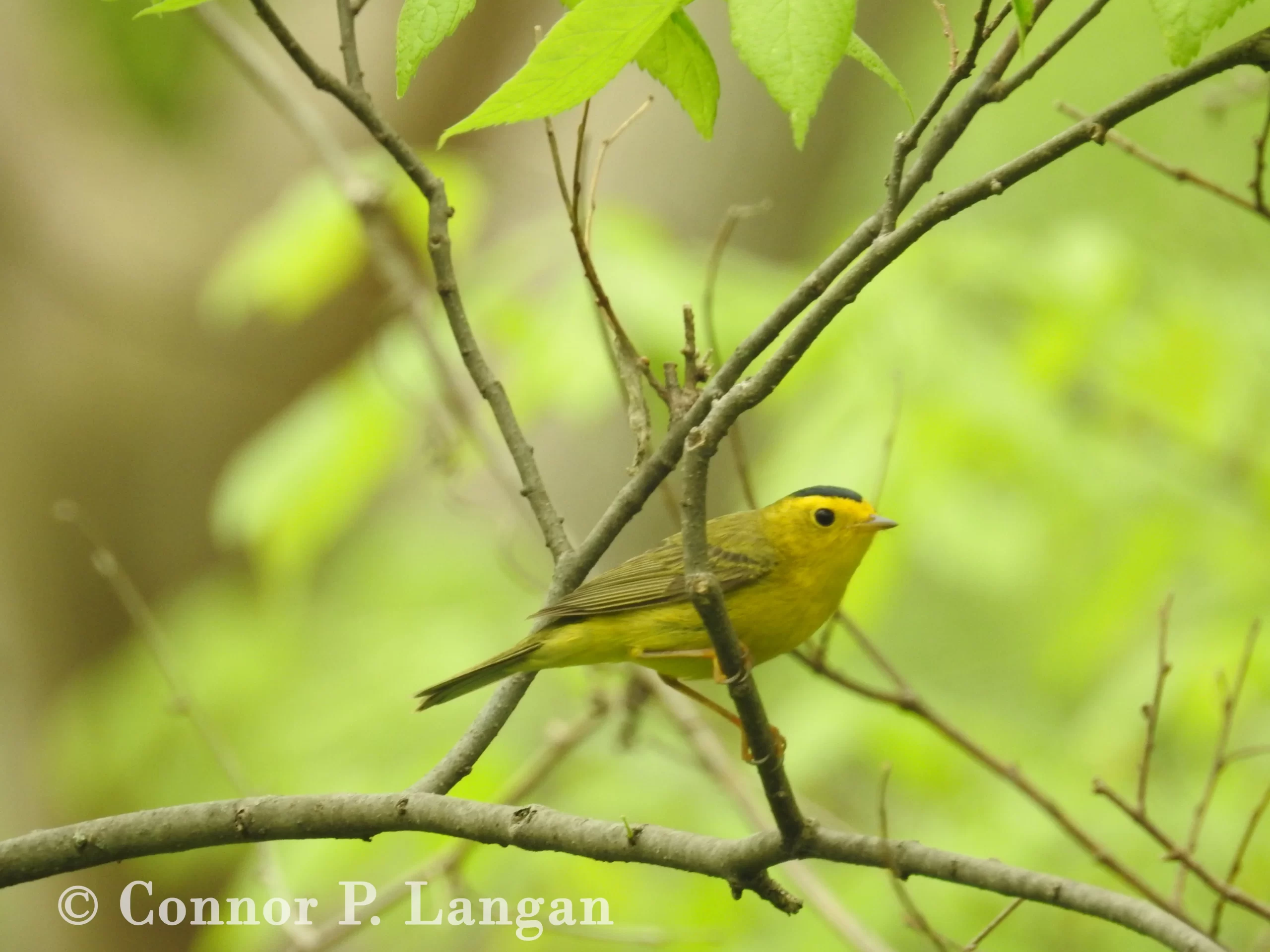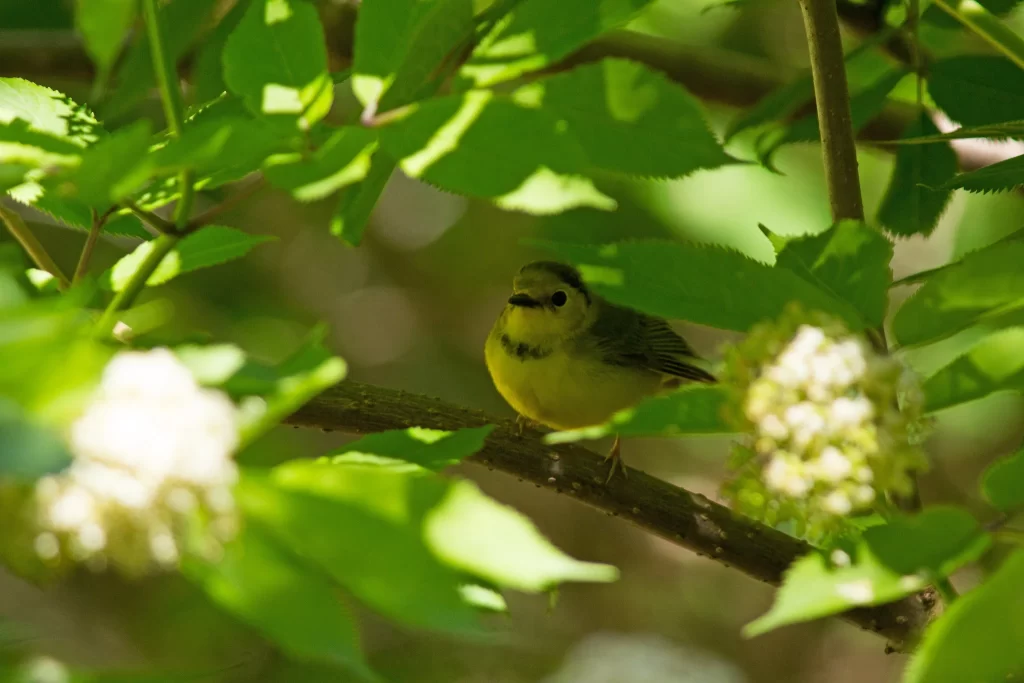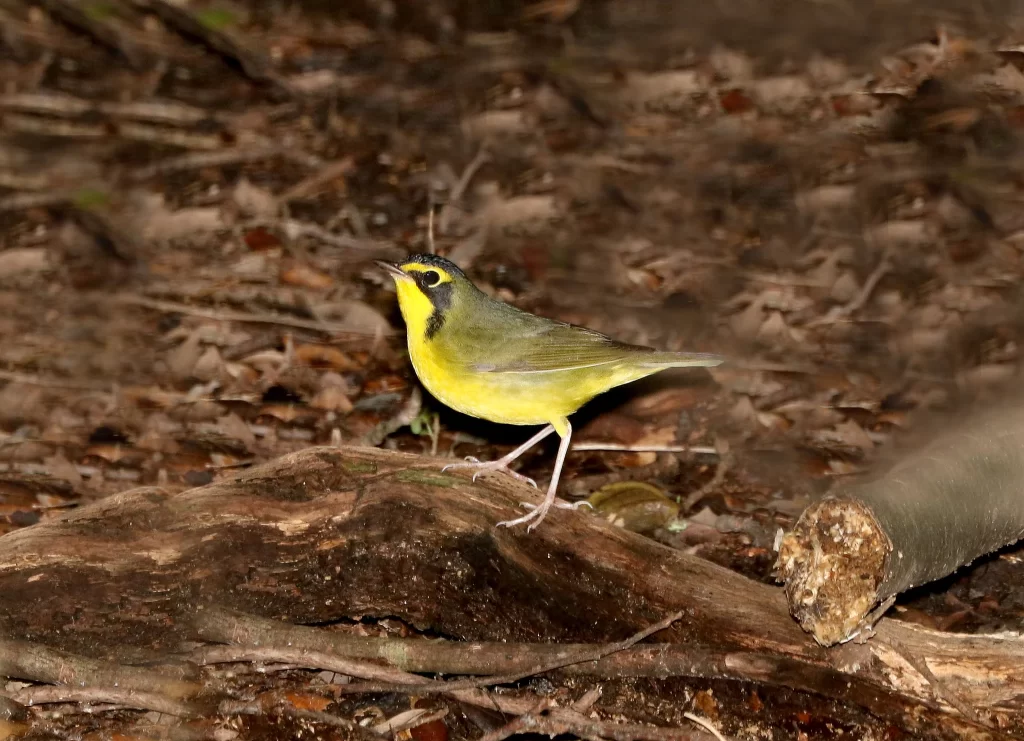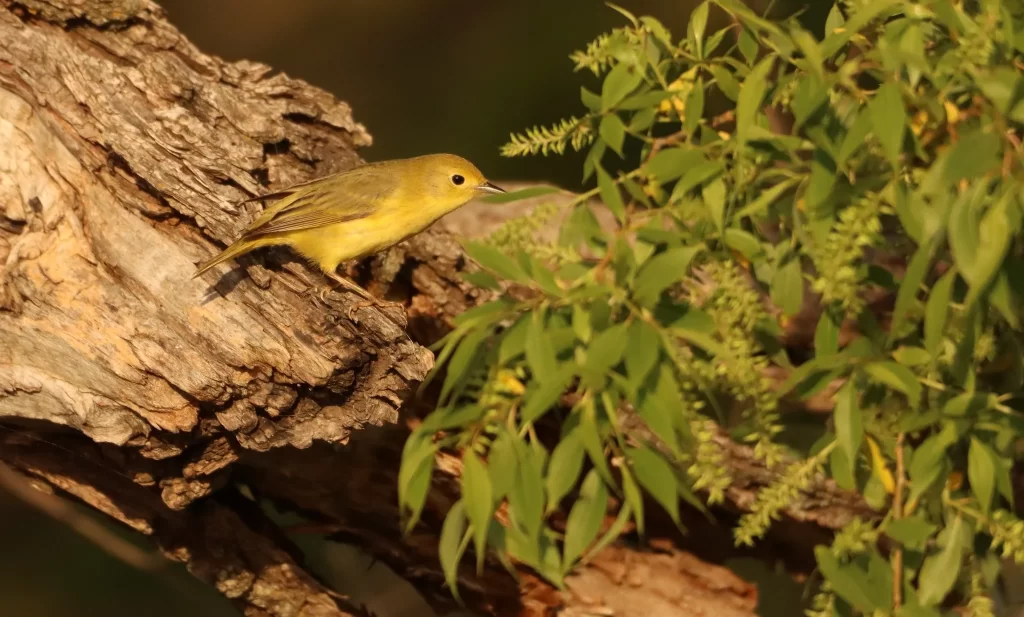Description
- Wilson’s Warblers are petite birds with long tails, dark, beady eyes, and tiny beaks.
- This species measures just under 4 inches up to nearly 4.75 inches in length, and individuals weigh around 0.25 ounces.
- Male Wilson’s Warblers are entirely yellow below, with yellow faces, throats, chests, stomachs, and undertail coverts. Males have green backs, wings, and tails, while they have a black cap atop their heads.
- Female Wilson’s Warblers have a similar appearance to males, though they typically lack a black cap on their heads. Females are greener overall than males.
- Immature birds have a very similar appearance to females.
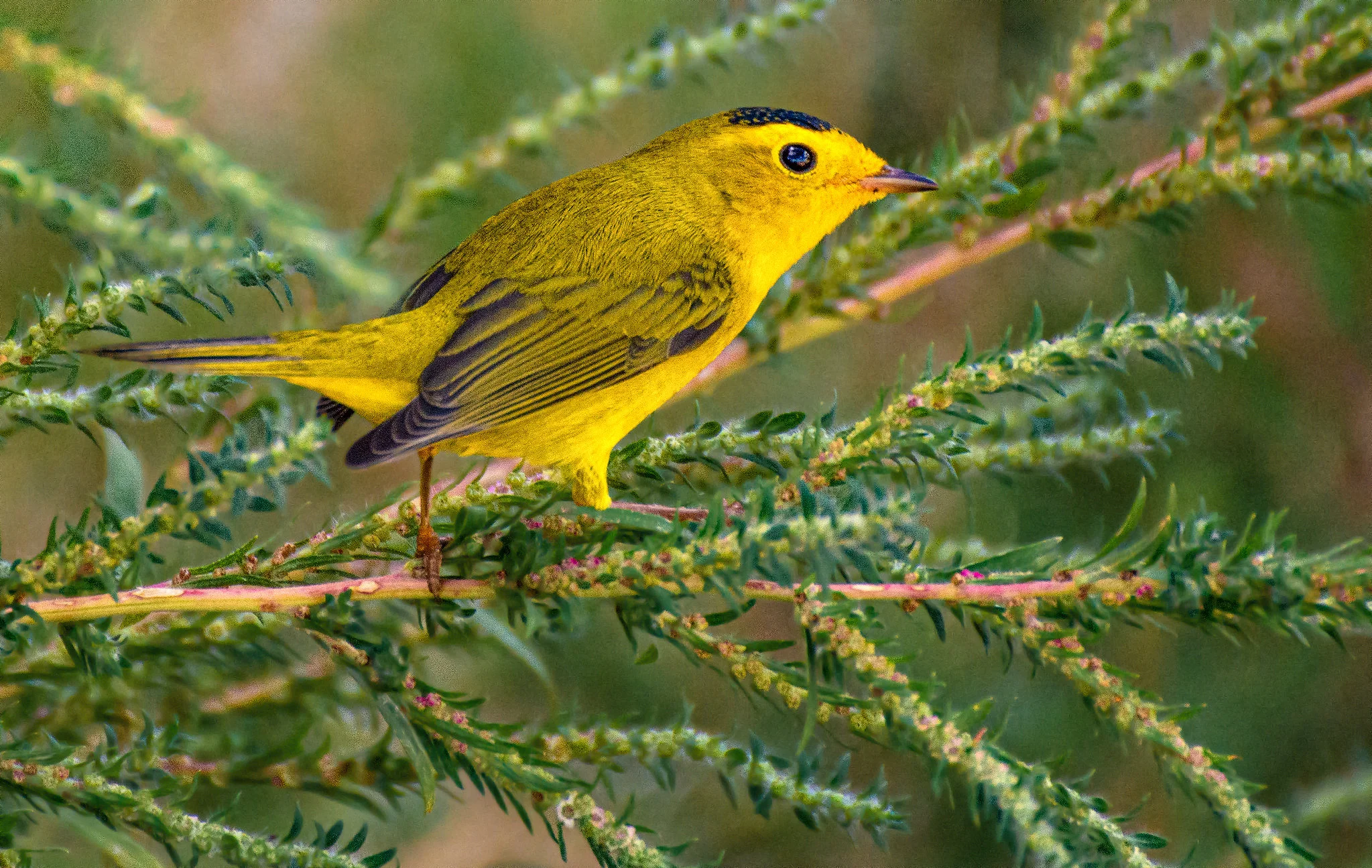
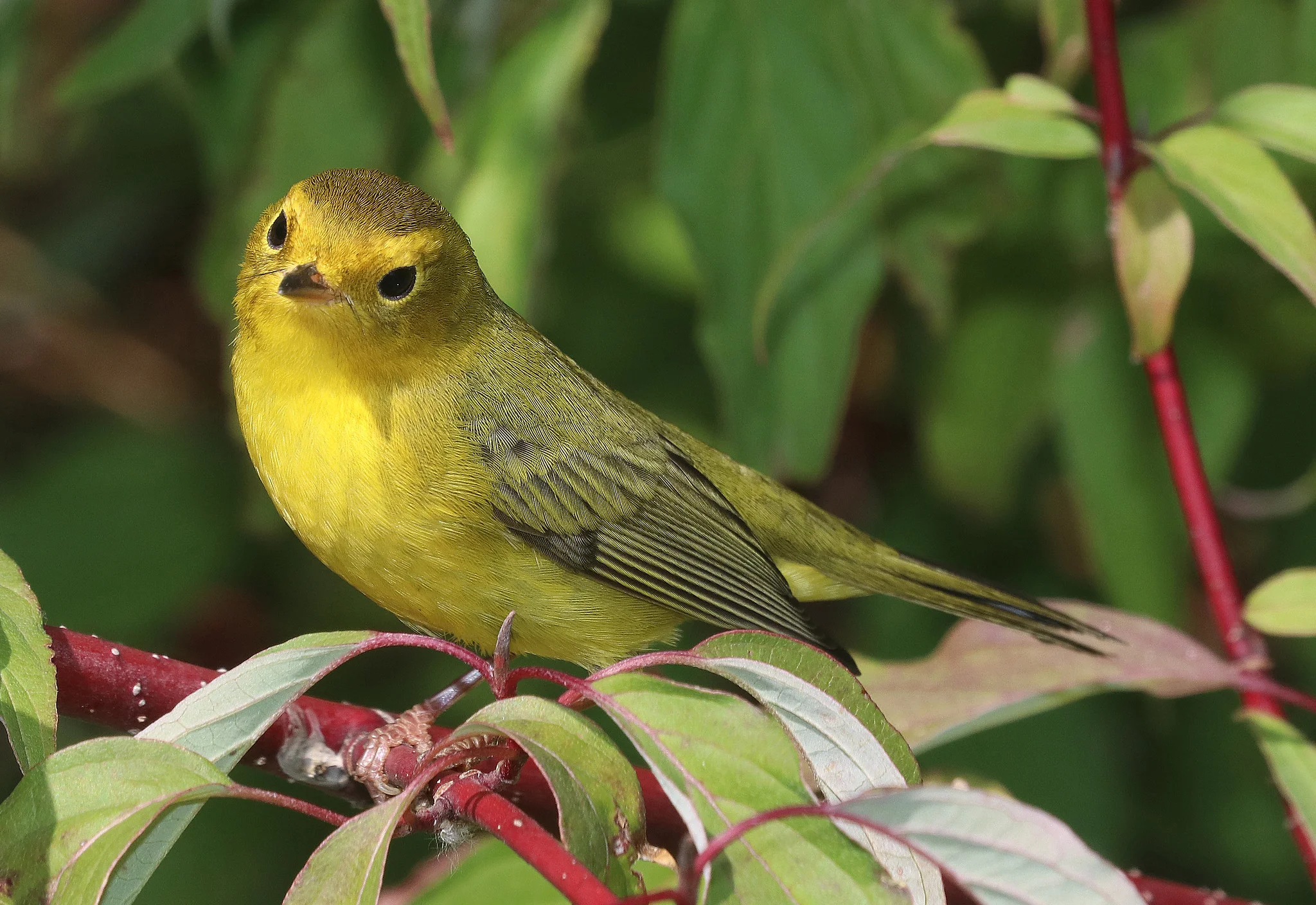
Behavior
- Male birds establish and defend territories during the breeding season, often chasing away rival males or distracting potential threats from the nest. On their wintering grounds, both males and females establish territories. This species is solitary or associated with their mate during the breeding season, but Wilson’s Warblers will feed in mixed species flock on the wintering grounds.
Diet
- Wilson’s Warblers are insectivorous, consuming aphids, beetles, caterpillars, and other insects that are abundant during their breeding season. These birds continue to eat insects in the winter, but they may also drink honeydew.
Habitat
- Wilson’s Warblers breed in a variety of habitats such as young forests, mature forests with understory growth, and thickets adjacent to streams. The characteristic shared by all of the habitats that they frequent for breeding is plenty of cover for nesting.
- Wilson’s Warblers can show up in parks, forests, or early successional habitats during migration, but they are especially fond of forested areas near water. During the winter, they can be found in thickets, rainforests, or cloud forests.
Range
- One of the most northerly breeding warblers in North America, Wilson’s Warblers breed throughout much of Canada, Alaska, and the Northwest United States. A population also breeds in the Rocky Mountains of Colorado.
- Wilson’s Warblers can show up in any of the lower 48 states during their migration. These birds winter in small numbers in states such as Texas and Louisiana, but the majority winter in Mexico and Central America.
Breeding
- Wilson’s Warblers are monogamous birds by nature that tend to find new mates on a yearly basis. Once a male has mated with a female, he does not help with any of the nest construction or incubation of the eggs, but he will help feed the young once they’ve hatched.
- Females place their nests on the ground within clumps of grass or at the base of a tree. Large pieces of plant material such as leaves or grasses are used to make the nest’s foundation. Once the foundation is constructed, Wilson’s Warbler females add soft materials like feathers, hair, plant down, and lichens to the interior of the cup-shaped nest. Construction of a nest usually takes around 5 days.
- Wilson’s Warblers may rear between 1 to 2 broods of young per year. Each clutch contains 2 to 7 eggs, while it takes as little as 10 and as many as 14 days for eggs to hatch. Nestlings leave the nest around 10 days after hatching.
Backyard Birding
- Do not expect Wilson’s Warblers to visit your bird feeders or nest in birdhouses on your property, as their ecology does not make them likely to do either of these things.
- If you want to attract this species to your yard, plant lots of shrubs that offer good cover for foraging bird species. Wilson’s Warblers may bathe in a birdbath that has a good amount of cover nearby.
Population Status
- Wilson’s Warblers have a population that exceeds 80 million birds. This may seem like a lot, but the total population of this species has declined by about 60% in the last half-century, so many conservation groups are keeping tabs on the status of this species.

